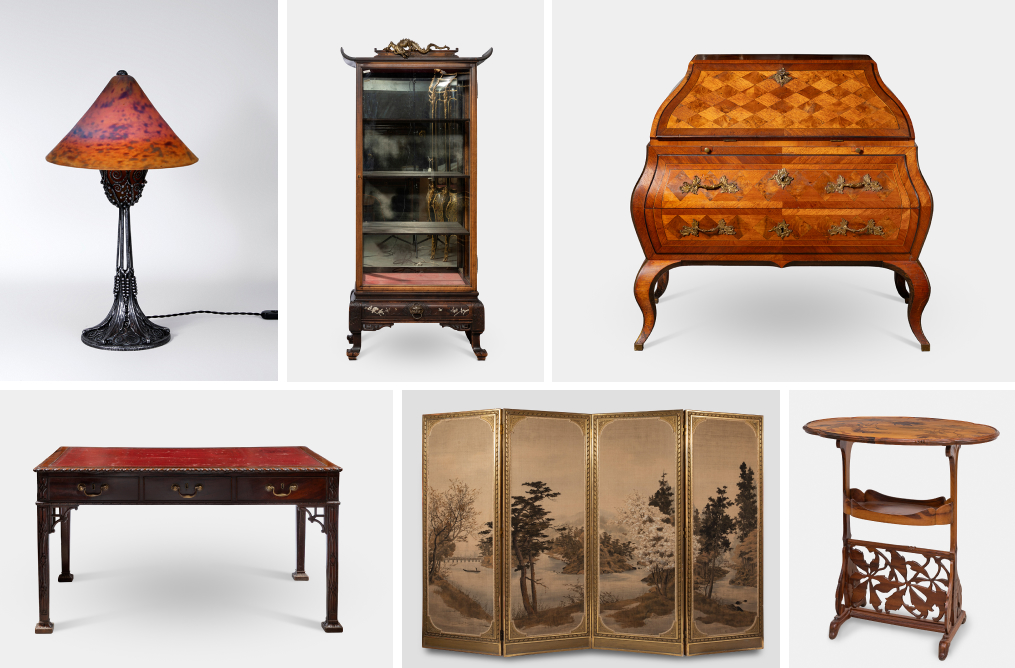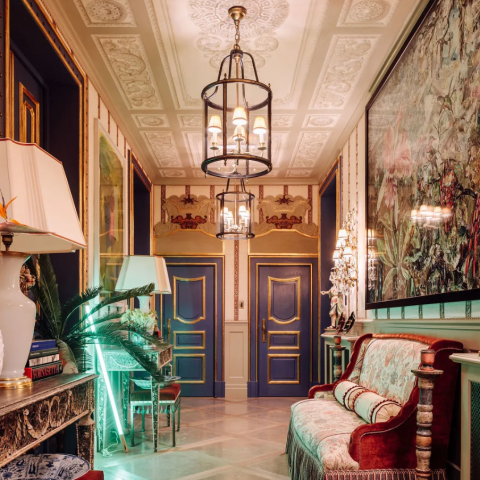Few elements of the domestic environment so eloquently reflect the evolution of tastes, customs and aspirations as furniture. More than functional objects, furniture has been a privileged witness to the great cultural, social and aesthetic changes that marked each era. In this blog we will explore three exceptional pieces that, separated by little more than a century, illustrate the formal, symbolic and technical diversity of this applied art.
It is even surprising to see the marked difference between two of them, despite the fact that they were conceived in practically contemporary periods. A perfect example of how geography, aesthetic currents and political contexts strongly shaped interior design.
The chest of drawers: a symbol of status and functionality in Swedish rococo.
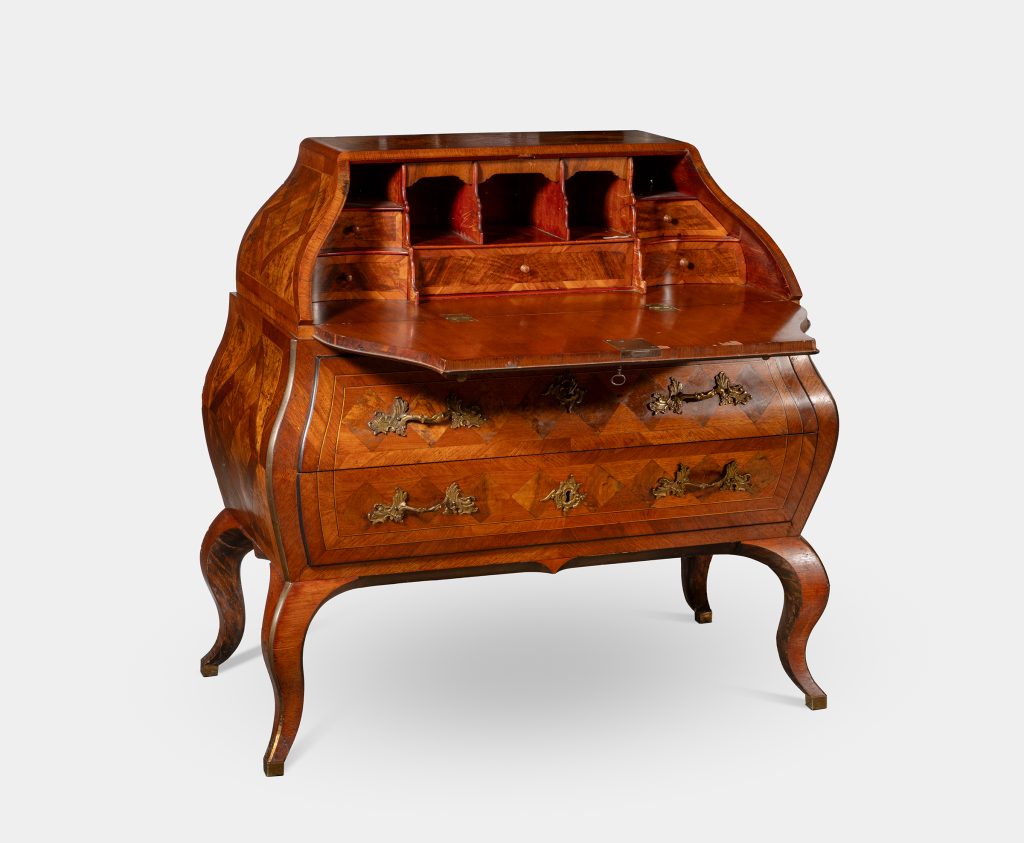
The first of the pieces is a Swedish rococo bureau-chest of drawers, dated around 1760. In the 18th century, this type of furniture achieved great prominence: it was practical, yes, but also a status symbol in bourgeois and aristocratic homes.
Under the reign of Louis XV, France set the standard for taste in Europe, encouraging the creation of more elaborate furniture, with hidden drawers, hinged tops and a marked attention to detail. This chest of drawers responds to that spirit: cabriole legs, undulating bombe-like forms and a refined use of marquetry that highlights the natural grain of the wood without resorting to excessive ornamentation. A clear example of the Louis XV style that Sweden adopted with enthusiasm, before moving towards the sobriety of Gustavian taste.
British Neo-Palladianism and the exotic elegance of the Chippendale style
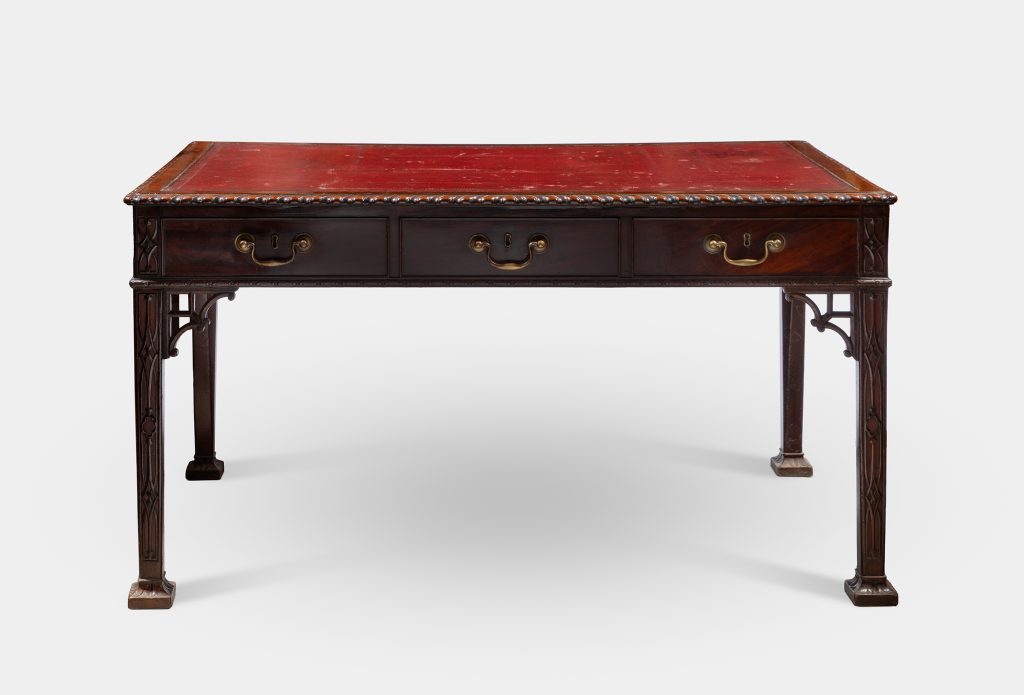
While Rococo triumphed in much of Europe, Great Britain looked to another horizon. Rejecting excessive ornamentation, the British embraced a more sober and rational style: neo-Palladianism, inspired by the Renaissance architecture of Andrea Palladio and popularized by figures such as Sir Richard Boyle and William Kent.
Within this aesthetic, the desk presented in this auction represents one of the most singular variants of English furniture: the Chippendale of Chinese taste. Its design reflects the European fascination with the Orient, with influences from the imagery of Cathay and an exquisite execution in Cuban mahogany, whose veining adds visual depth. The carved lacquerwork on the uprights confirms the mastery of the craftsman and the refined exoticism that conquered the British salons of the 18th century.
Japonisme and the fin-de-siècle look at the Far East
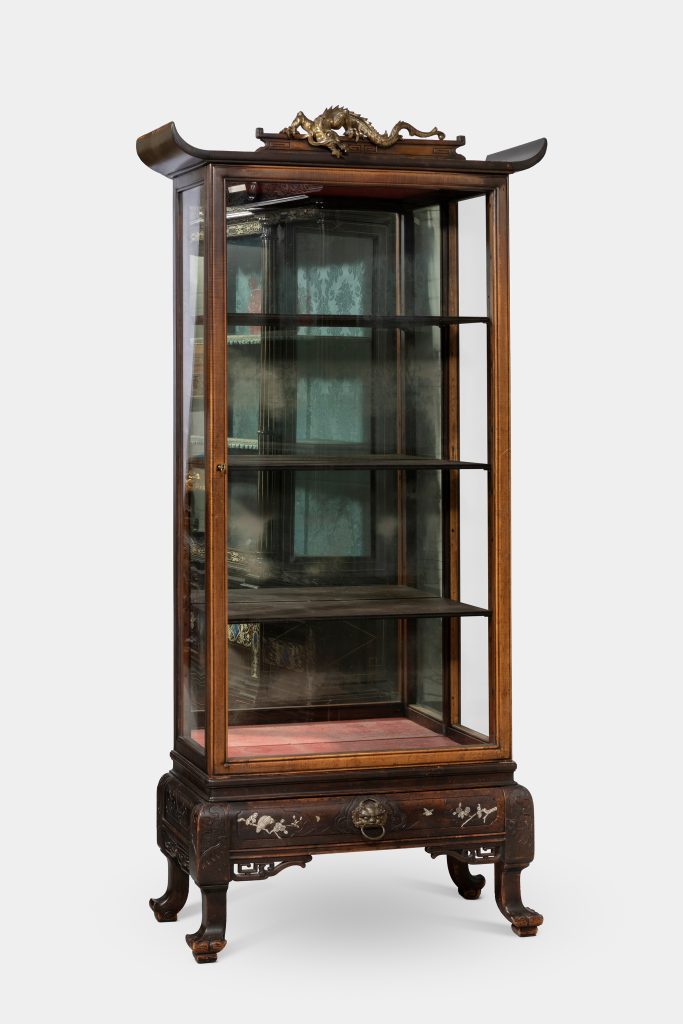
Fast forward almost a century and we return to France. In the second half of the 19th century, japonisme burst onto the scene after the opening of Japanese ports to international trade. Between 1854 and 1858, Japan signed treaties with several Western powers, and very soon Japanese art – from ukiyo-e prints to netsuke – began to fascinate European collectors, designers and artists.
In Paris, this influence became a real aesthetic trend, especially visible in decorative arts and Japanese-inspired furniture. The firm Perret et Vibert, active since 1874, knew how to interpret this trend with great sensitivity. The showcase presented here, designed to display delicate collector’s items, culminates in a gilded bronze dragon: a mythological figure that embodied oriental fantasy as imagined by fin-de-siecle Europeans.
Keys to choose and buy antique furniture wisely
These three pieces invite us to travel through centuries of history, from the splendor of rococo to the rational geometries of British neoclassicism and the refined exoticism of japonisme. Each piece of furniture speaks not only of functionality or style, but also of the ideals, obsessions and cultural references of its creators and users.
For those who wish to start or expand their collection, acquiring antique furniture can be an enriching experience both aesthetically and historically. However, there are certain factors to consider:
- Authenticity and provenance: It is always advisable to have documentation or certificates proving the origin and age of the piece. At Setdart, each lot includes a detailed file prepared by experts.
- Style and historical context: Understanding the cultural context in which it was created helps to better value the piece and facilitates its integration into coherent collections or contemporary spaces.
- Materials and techniques: Fine woods, traditional assemblies and ornamental details are signs of quality. Familiarity with these elements helps to distinguish between reproductions and originals.
- Market trends: Some typologies or styles are booming among collectors and interior designers. Being aware can be key if you are looking for an investment with projection.
Do you want to sell antique furniture on Setdart?
Do you have antique furniture, period pieces or historical decoration and you are thinking of selling them?
At Setdart we offer you a free and confidential appraisal. Our team of furniture and decorative arts specialists will be happy to advise you and help you value your pieces.

